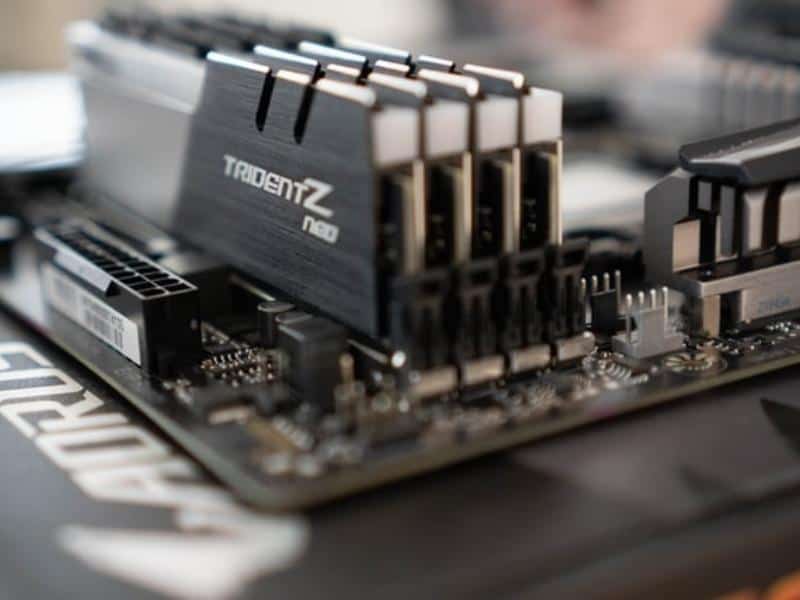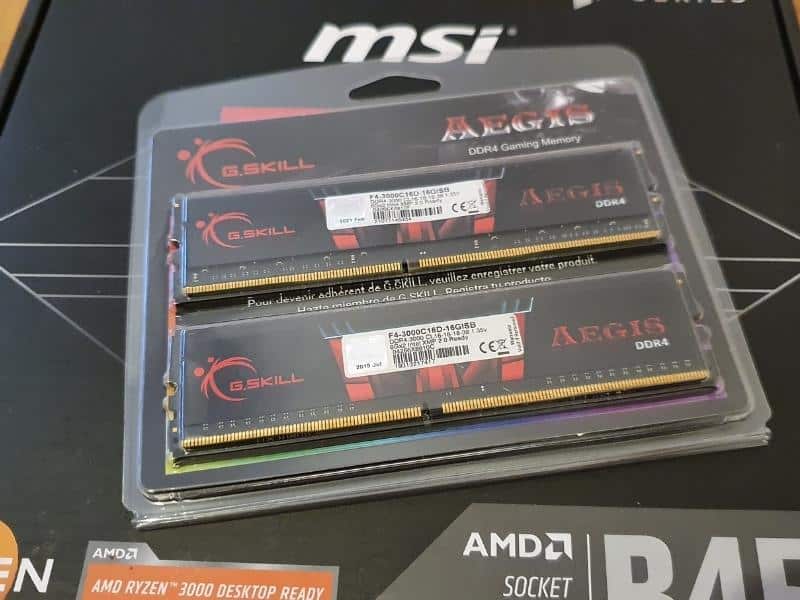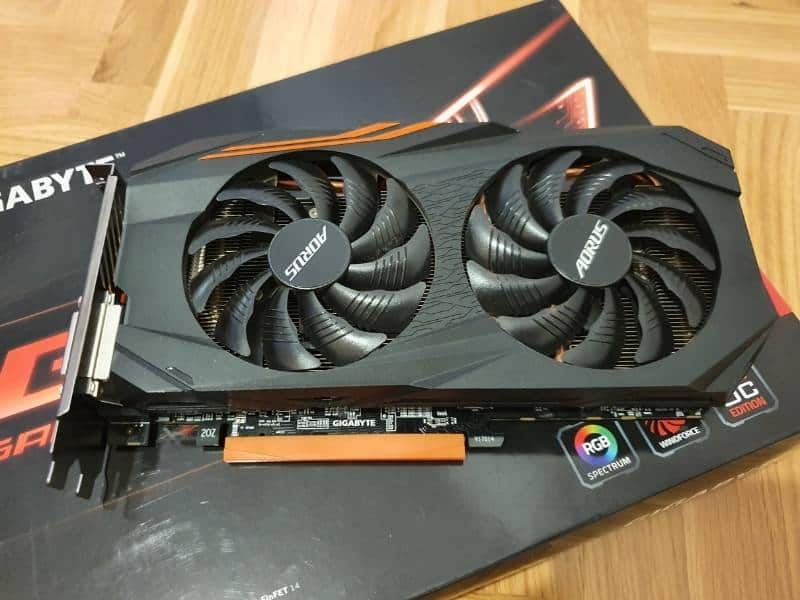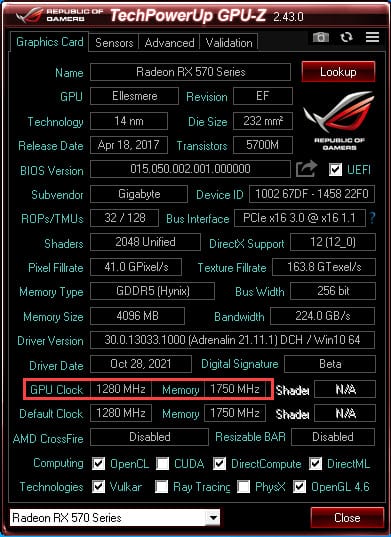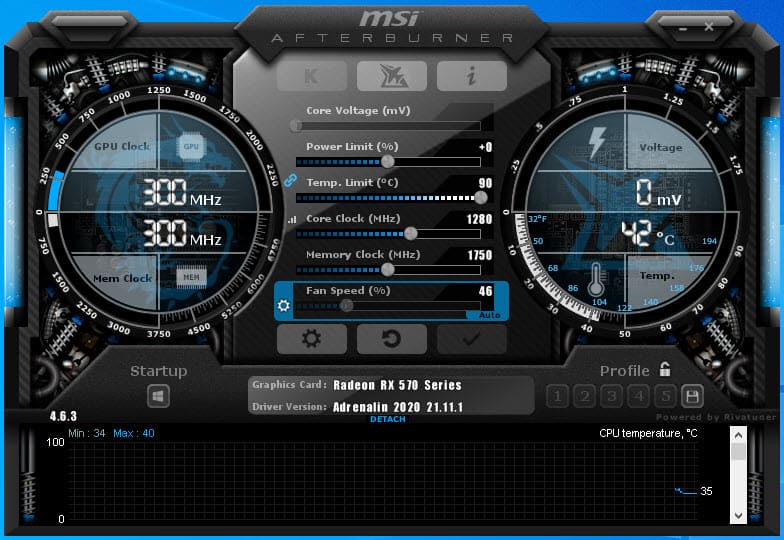Do memory clock speed and VRAM (GPU RAM) clock speed have the most impact on the performance of a gaming computer? The thing isn’t so simple, and we need to look at what influences us the most to say that our computer is fast or slow.
In general, two essential things affect the speed of a computer: the amount of RAM and disk speed. You got a new Ryzen 7 or Intel Core i9, but what does that mean if you have a slow HDD built-in as your primary drive. The processor will wait for the longest to load data due to the slow disk.
On the other hand, if you have a little RAM, say 4 or 8 GB, the operating system (OS) can reach for the virtual memory on the disk, which slows down the entire PC system even more.
Even if you install a fast NVMe SSD but have little RAM, you can feel a severe drop in performance. Especially if gaming or some demanding work in question (rendering, video processing, etc.).
Table of Contents
What is RAM?
RAM (Random Access Memory) or just memory is the hardware in the form of a stick placed in the memory slots in the motherboard. RAM stores all the programs you run while your computer is up. This data in RAM is available to the processor, which processes data much faster than accessing it directly on disk (HDD, SSD).
When we turn off the computer, the RAM contents are irretrievably lost. RAM belongs to the so-called type of volatile memory. The data is reloaded into RAM when we turn on the PC again. The OS is the first program to load into RAM from a slower disk (HDD or SSD) after turning on the computer.
RAM physically represents the memory modules you insert into the corresponding slots on the motherboard. Today, you can get 4, 8,16,32,64, and 128 GB memory modules.
The most massive and affordable variant of the memory module is 8 or 16 GB capacity.
How much RAM is enough?
Every severe gamer strives to keep his system running smoothly, without twitching or slowing down in all his favorite games, with full detail and high resolutions. The amount and speed of memory certainly play a significant role in this, but you must find an appropriate measure.
You need to know that it isn’t worth throwing money at costly and fast memory modules of enormous capacity. You can get excellent gaming performance with less investment.
The primary purpose of your computer also determines the amount of memory needs it. Today, computers usually come with 8 and 16GB of RAM. Still, they can often have 32 and 64 GB of RAM for professional use in high-end configurations.
Of course, you shouldn’t think of a smaller amount of 8GB of RAM. That’s some minimum for regular operation, even for some more tough office jobs in MS Excel or Word.
So the recommendation is that cheaper office computers and home computers for everyday multimedia use have at least 8GB of RAM. Gaming computers, desktops, or laptops, shouldn’t have less than 16GB of RAM for comfortable operation. 32GB will not affect the performance of gaming computers much, but more for the pro-business.
If you have two 8GB RAM modules (16GB), you can check your performance. If you remove one module, you will notice a significantly longer loading of your games. Of course, the speed is also affected by the operation in dual-channel mode, but in general, a PC with 16GB will work much better.
If you want to secure yourself for the future, you can also take 32GB of RAM. Still, today 16GB is enough for the optimal performance of a modern gaming computer.
Single or dual-channel?
If you install a 16GB module on your computer, the memory will work in single-channel mode. If you add another 16GB module or install two modules of 8GB RAM instead of one 16GB module, it will work in dual-channel. This mode is better because the memory controller accesses both modules in parallel, doubling the memory bandwidth.
So always choose a combination of two (or more even numbers) memory modules of the exact specifications for the best memory performance. Typically, you can buy memory in the form of memory kits of two or four memory modules.
Why sell PCs with one memory module?
Price is one of the reasons why new PCs only come with one memory module (commonly 8 GB). Also, when you have the funds, you will buy another identical module and increase the performance of your computer in a simple way.
The amount of memory built into your motherboard also depends on the number of memory slots. Suppose your motherboard has only two memory slots, and you have an 8 GB module built into one. In that case, it is logical that you will take another module and have 16GB for dual-channel.
You need to remove the 8GB module for different memory combinations and add 2 x 16GB of RAM. I recommend taking a motherboard with more memory slots if you still want more freedom. It’s much more flexible and comfortable to add and combine memory modules.
Dual-channel improves game performance, especially when playing in 1080p, when the processor and memory controller speed comes to the fore. In addition, you will notice faster loading of games, so I generally recommend that you always use the memory in dual-channel mode.
RAM Clock Speed
While we are waiting for the transition to the DDR5 standard next year, DDR4 RAM is still current and old DDR3 can be found somewhere. The most commonly used DDR4 memory speeds are 2133Mhz, 2400Mhz, and 2666Mhz.
You will take high-speed memory modules mainly due to overclocking. Another term is related to memory speed. That’s the latency that manufacturers refer to as CAS or LT rating. Latency represents the speed of memory access. Usually, for very high clock speeds, higher latency is used as well as the operation of the module at a higher operating voltage.
If a module is marked to run at 4400Mhz, you should know that you must have a suitable (more expensive) motherboard and a more powerful processor for this speed.
The memory controller is built directly into the CPU with modern CPUs, so its quality depends on the maximum memory clock speed. Ideally, the clock speed of the controller and the CPU cache is equal to the memory’s clock speed.
Interestingly, the new AMD Ryzen CPUs use a special infinity fabric bus. For best results, we must synchronize the operating clock of the memory controller, the clock of the Infinity bus, and the clock of the memory. There is a general recommendation that the AMD platform RAM speeds of 3600Mhz are sufficient for optimal performance in most modern games.
I also recommend faster RAM for AMD Ryzen processors with integrated graphics.
If we go with higher memory speeds, then the operating clock of the memory controller is no longer synchronized with the working clock of the memory. We also have increased latency. If you still want high-speed memory modules, you want a clean overclock and only chase high results.
Most users will be satisfied with 3000Mhz already in most games, except that some applications and games are susceptible to memory speed (for example, video encoding).
What is VRAM?
As for your graphics card, several parameters determine its performance, namely: GPU (graphics chip) clock, the amount of built-in VRAM (RAM installed on graphics card), and clock speed VRAM.
The VRAM function is the same as RAM on a PC – temporarily storing data while the computer is running. The difference is that the VRAM stores, for example, the textures of games you have run. The more textures are loaded into VRAM, the faster they are available for the GPU to process. That means your games will render much quicker, and the game will run smoothly on the screen.
It is also desirable to have as much VRAM available to process larger and more complex textures. The memory clock is the VRAM frequency on the GPU. The higher the frequency, the faster VRAM can take, retain, and replace short-term information.
Like motherboard RAM, information is constantly moved back and forth, erased, and replaced. VRAM is essential for storing the GPU’s assets to render, such as object textures.
The memory clock determines the speed of VRAM, i.e., the frequency at which it works. The frequency of the GPU chip is called the core clock. This notation is similar to the CPU clock and RAM clock on a computer.
GPU core clock and VRAM memory clock are essential for top performance in games. We can say that the GPU core clock is also more critical for FPS in games than the VRAM clock.
VRAM clock
So how much does a memory clock affect game performance? I’ll tell you right away – a little. Some games like fast VRAM as possible, but these improvements are academic, i.e., negligible in real work. It is more important to have more VRAM on the graphics card.
Overclocking VRAM can have minor improvements in games (depending on the game) from 2 to 10% but judge for yourself whether it is worth straining the memory.
GPU Core Clock
So when you look at every frame in the game, what matters is the GPU core clock. The rule is that the more, the better, but this also depends on the copy of the graphics card.
The GPU core clock determines how fast the graphics card will process the graphics, i.e., display as many frames per second on the screen (FPS).
You can get more FPS with overclocking; nothing new and scary. Even the manufacturers themselves resort to it. You can often see a note on the packaging or the graphics card that says OC Version or OC Edition. Of course, you can also further overclock these versions of graphics cards.
Suppose you don’t want to overclock the GPU. However, the manufacturers have introduced a small trick to improve such users’ graphics card performance. They called it a boost clock, and it is activated when the graphics card is running under a heavy load. Depending on the version of the card and the manufacturer, this boost clock increases the GPU core clock by some 10%, which gives you a small but noticeable jump in performance.
Monitoring and OC Tools
Every motherboard manufacturer also offers a tool for monitoring computer health, i.e., all vital operating parameters; temperature, voltages, fan speed, etc. In addition, they offer the ability to overclock CPU and RAM in a few simple steps for the average computer user. All this from the comfortable environment of your operating system.
More advanced users still do OC from the motherboard BIOS because they have complete control over all the essential parameters.
The same story applies to graphics cards. You still have to work with the OC from the tool recommended by your graphics card manufacturer.
Asus has its own tool GPU Tweak II, Gigabyte Aorus Engine, etc.
MSI has a great OC tool MSI Afterburner, which you can also use for third-party cards. It’s easy to use and powerful enough, so I recommend this tool to anyone who wants to play around with the OC of their graphics card.
Conclusion
As for RAM in all modern gaming computers, you need 16GB in dual-channel mode. If your budget allows, you can immediately take 32GB (2x16GB) of RAM to be quiet for a couple of years.
If you are able, choose a motherboard with four memory slots because you have more freedom in expanding the memory.
RAM clock speed is important, but it is not crucial for the computer’s performance. You will be delighted with the memory clock speed of 3000Mhz or 3200Mhz because the speed of the graphics card plays a vital role in games.
The GPU core clock is most important for getting as many FPS as possible in games. The VRAM clock is important, but it is more important to have more VRAM available for gaming. For today’s games, the minimum is 4GB of VRAM.
If you have any additional questions, do not hesitate to leave a comment.


